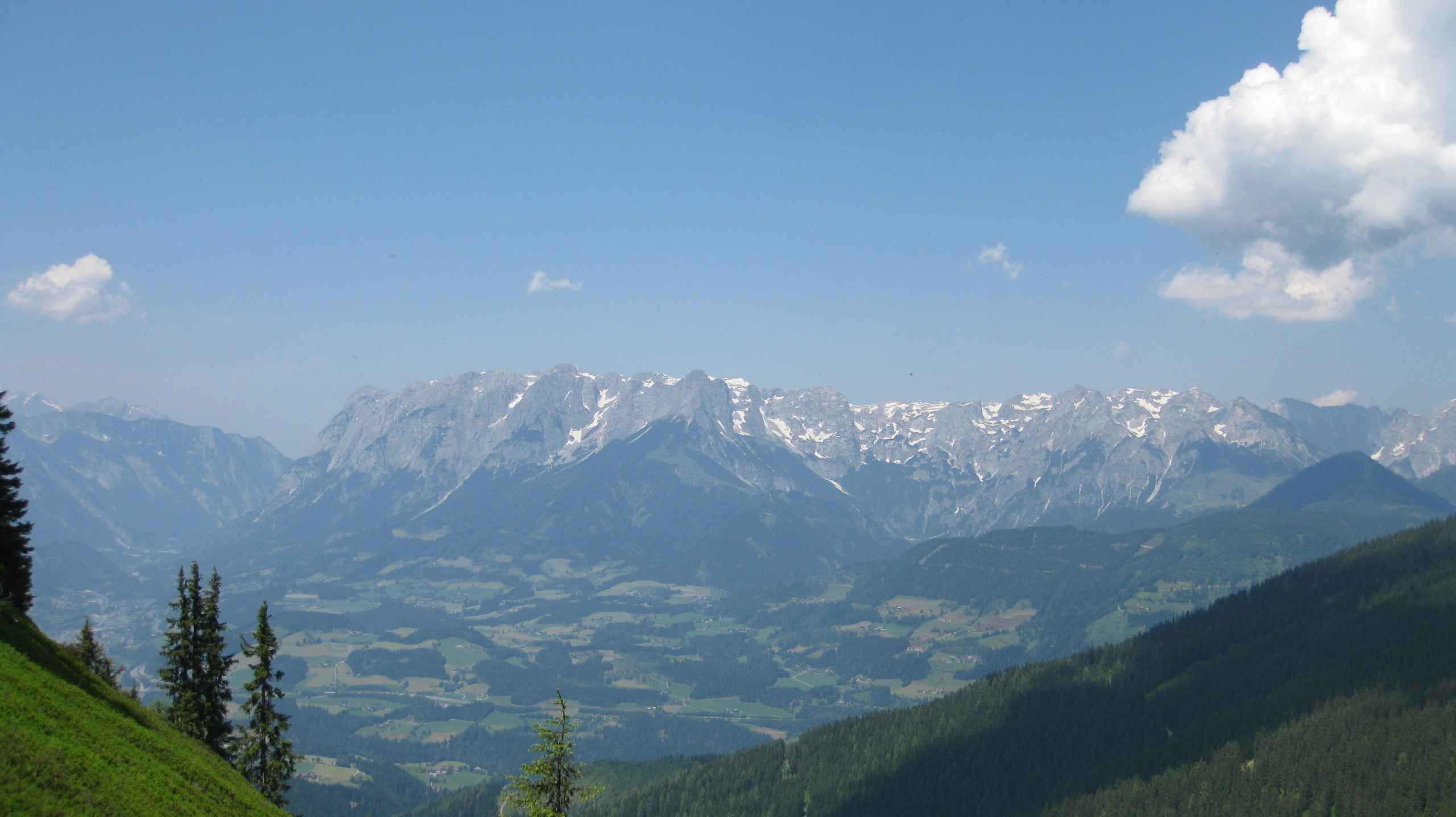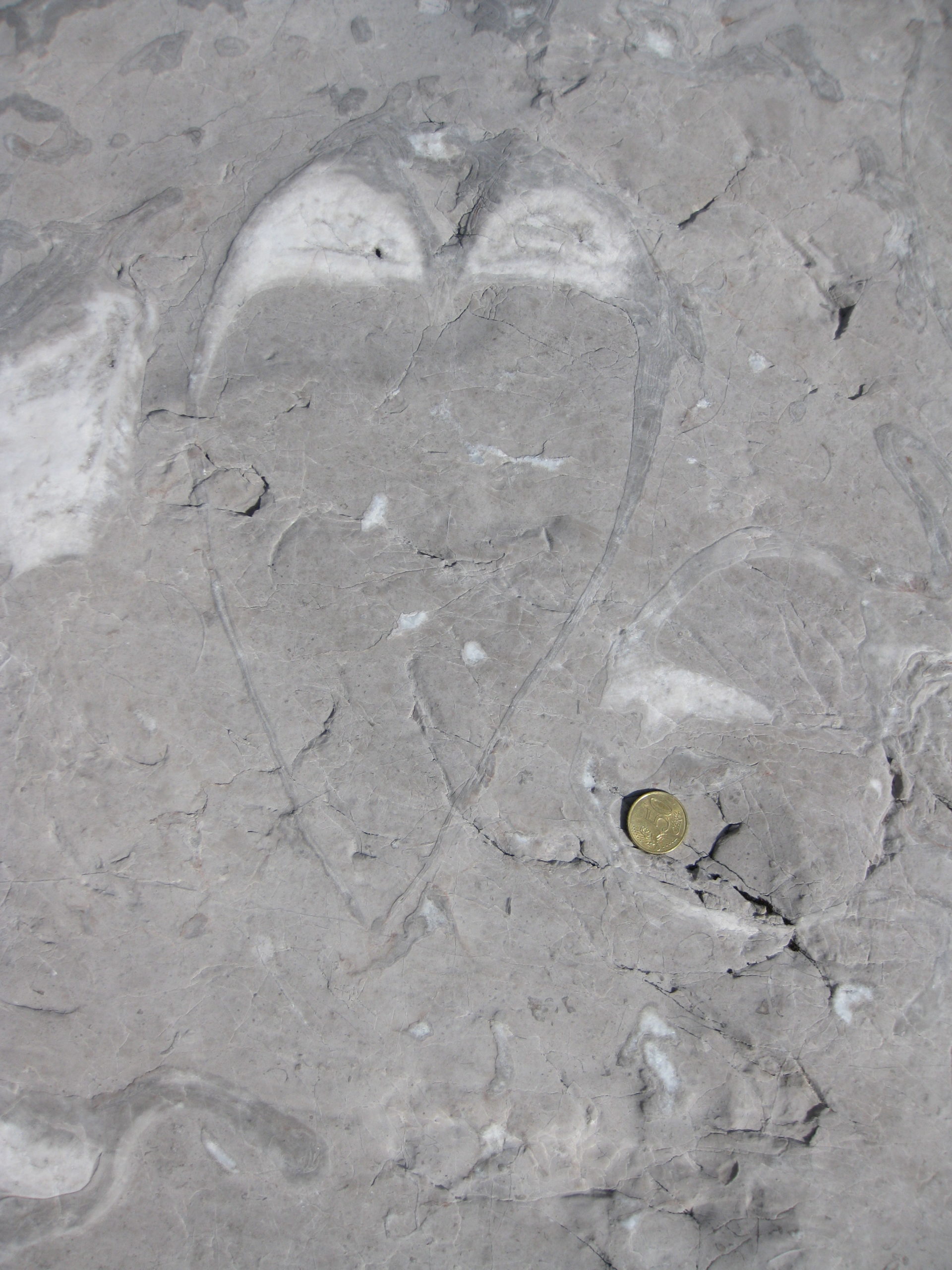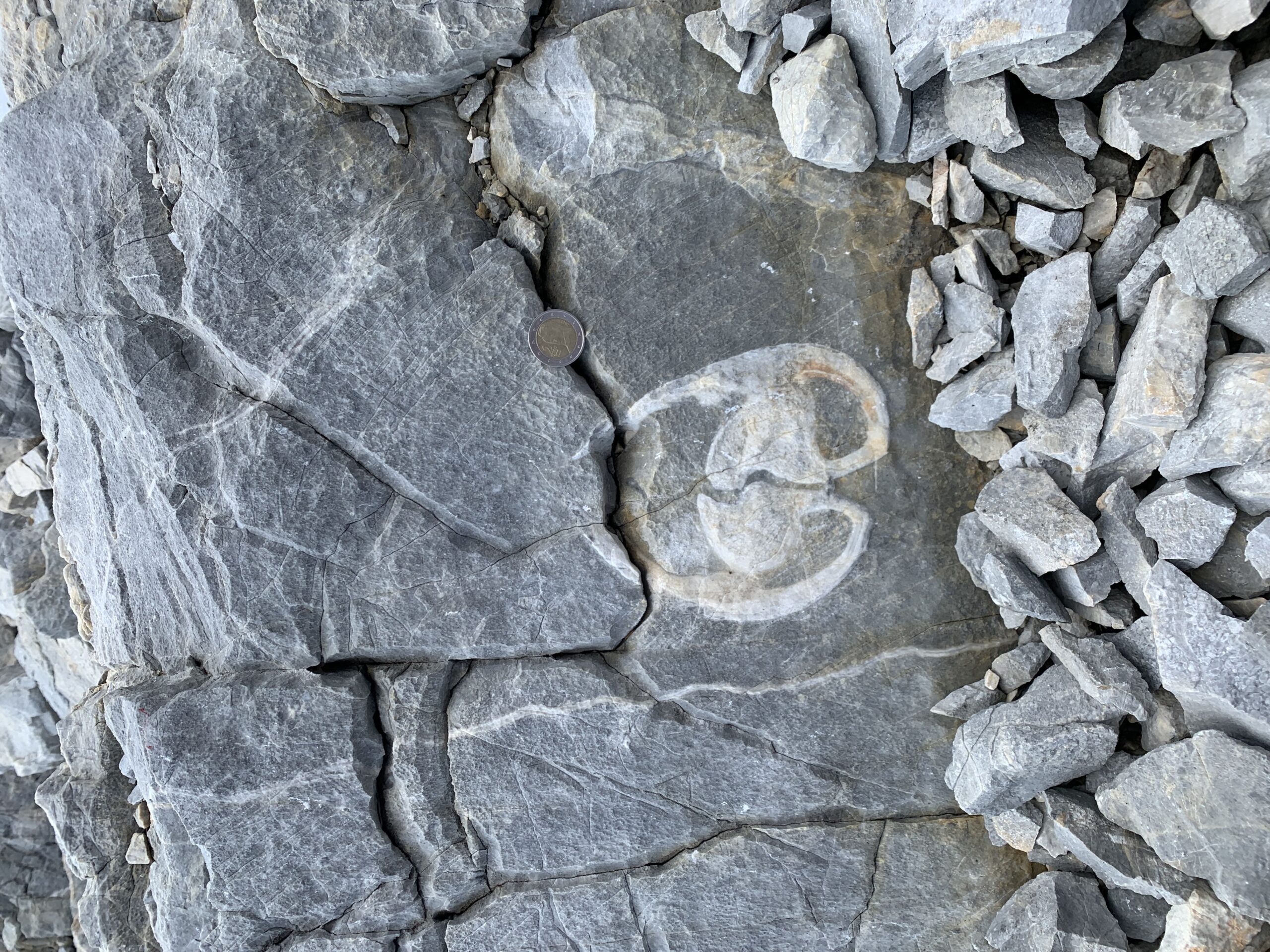Tennengebirge - Karst and Caves
The Tennengebirge mountain range is part of the nature reserve and European protected area of Salzburger Kalkhochalpen (Salzburg Calcareous Alps). The approx. 60 sq. km. large mountain group consists of a vast plateau with some steep walls. The highest peak is the Raucheck (2,430 m). In the Ore of the Alps UNESCO Global Geopark, the community of Hüttau is part of this massif.
The base of the Tennengebirge range is formed by the Ramsaudolomit (Ramsau dolomite formation), on top of which is the layered (banked) Dachstein limestone. The former consists of tidal sediments, the latter of those deposited in the subsequent shallow lagoon of a tropical sea in the Middle to Upper Triassic. Because of this, countless fossils can still be found today on the plateau surface, for example, megalodonts.
The plateau surface is heavily karstified. Depending on the altitude, you will find sinkholes, grooves and/or fissures. The rainwater drains into rocky crevices, resulting in caves such as the Eisriesenwelt in Werfen. On some peaks there are scattered "eye stones". These are stream pebbles deposited by streams and rivers before the mountain massif was uplifted.
Kids
Karst and caves
Limestone is a rock that consists of the mineral calcite, which is chemically composed of CaCO3 or calcium carbonate. Many caves around the world are made of limestone with very small calcite crystals. However, limestone is mainly formed in the oceans!
Calcite is the main component of the shells and body parts of many marine animals such as corals, mussels and starfish! Limestone forms when the calcareous parts of these animals are buried and stick together over time! If the conditions are right, these parts can retain their shape or leave marks on the rock (like a stamp), which then become what we know as "fossils". *
The best way to check whether a rock is made of limestone is to drop a small amount of diluted acid into it. A chemical reaction takes place, releasing carbon bubbles that look like foam! If you want to try this out, you should definitely get help from an adult!
* Of course, fossils are not limited to marine animals! They can also be land animals, plants or any other organism!
Karst, caves and stalactites
Most caves in the world are made of limestone, but they can also be made of gypsum! Although they differ in composition, gypsum caves and limestone caves form in a similar way. Gypsum and calcite are soft, soluble minerals and therefore easier to weather and erode than harder minerals such as quartz. Rainwater and groundwater usually contain small amounts of carbonic acid, which easily dissolves these minerals as the water seeps into the ground.
Over time, this process creates underground caves and sinkholes, i.e. depressions that break through the surface of the terrain. The landscape or topography created by the dissolution of such rocks is known as "karst", named after the Kras Plateau in Slovenia.
If you ever enter a cave, you will probably see "icicles" of calcite (or gypsum!) that appear to drip from the ceiling, or mounds that appear to grow from the floor. These features are called "speleothems" or stalactites. Stalactites are the ones on the ceiling, while stalagmites are the ones on the floor!
Stalactites form when water rich in dissolved calcium carbonate deposits this substance on the ceiling. As the stalactites "grow", the water continuously drips to the floor, where the calcium carbonate is deposited and can form a stalagmite. As both speleothems develop, it is possible for them to meet and merge into one column!
Karst tower and the importance of karst
Karst topography is often associated with depressions such as caves, underground drainage systems and sinkholes. However, some regions develop quite differently and are characterised by isolated, steeply sloping hills that rise above plains. Underground, however, these towers are still connected by long caves and passages!
Tower karst or "karst forests" represent the most advanced stage of karstification. It typically develops in humid, tropical and subtropical climates where frequent rainfall has dissolved large amounts of limestone, preferably along joints or fissures, leaving behind residual towers. The increased amount of carbon dioxide (CO2) - which comes from both the atmosphere and decaying tropical vegetation - also means that more carbon dioxide (H2CO3) is available to dissolve the underlying rock!
Examples of this remarkable landscape are the stone forests of Kunming, China, and Coron, Palawan, Philippines, where the karst rocks seem to float on the water!
Karst landscapes harbour diverse and unique ecosystems, such as those in caves. People also benefit from such landscapes through tourism and recreation, but also through the groundwater resources. Limestones are ideal groundwater reservoirs and supply communities with clean drinking water!



